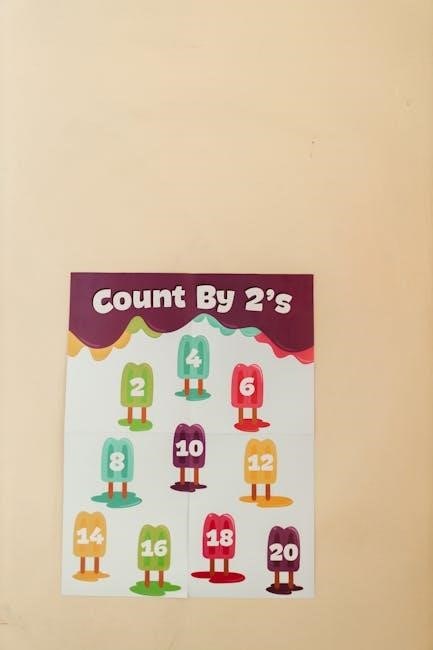The decisional balance worksheet pdf is a helpful tool for weighing options and making informed decisions with ease and clarity using online resources and guides available now.
Purpose of the Worksheet
The decisional balance worksheet pdf serves as a valuable resource for individuals seeking to evaluate the pros and cons of a particular decision or behavior change.
The primary purpose of this worksheet is to provide a structured framework for weighing the potential benefits and drawbacks of a given option, thereby facilitating a more informed decision-making process.
By utilizing this worksheet, individuals can systematically identify and consider the various factors that may influence their decision, ultimately leading to a more thoughtful and deliberate choice.
The decisional balance worksheet pdf is a versatile tool that can be applied to a wide range of situations, from personal to professional contexts, and is particularly useful for those struggling with ambivalence or uncertainty.
Overall, the purpose of the decisional balance worksheet pdf is to empower individuals with a clear and comprehensive understanding of their options, enabling them to make more intentional and informed decisions that align with their goals and values.
Understanding the Concept of Decisional Balance
Decisional balance involves weighing pros and cons of a decision using a worksheet pdf for clarity and informed choices now available online.
Definition and Explanation
The decisional balance worksheet pdf is defined as a tool used to weigh the pros and cons of a decision, allowing individuals to make informed choices. This concept is explained as a process of identifying the advantages and disadvantages of a particular action or behavior. The worksheet provides a framework for individuals to visualize their options and consider all aspects of a decision. By using the decisional balance worksheet pdf, individuals can gain clarity on the potential outcomes of their choices and make decisions that align with their goals and values. The definition and explanation of decisional balance are rooted in the idea that individuals can make positive changes in their lives by weighing the pros and cons of their decisions. The worksheet is a valuable resource for anyone looking to make informed decisions and achieve their goals. It is a simple yet effective tool that can be used in a variety of contexts.

Components of the Decisional Balance Worksheet
The worksheet typically includes tables and columns to list pros and cons of a decision using decisional balance worksheet pdf templates found online easily now.
Identifying Pros and Cons
The decisional balance worksheet pdf is designed to help individuals identify the pros and cons of a particular decision or behavior change. By using this worksheet, people can weigh the advantages and disadvantages of their choices and make informed decisions. The pros and cons are typically listed in separate columns, allowing for a clear comparison of the potential outcomes. This exercise helps individuals to think critically about their decisions and consider multiple perspectives. The decisional balance worksheet pdf is a valuable tool for anyone looking to make a positive change in their life, as it provides a structured approach to decision-making. By identifying the pros and cons, individuals can make more informed choices and increase their chances of success. The worksheet is easy to use and can be adapted to suit various situations and decisions. It is a useful resource for personal and professional development.

Using the Decisional Balance Worksheet
The decisional balance worksheet pdf helps individuals make informed decisions using a systematic approach with clear guidelines and instructions available online now easily.
Instructions and Guidelines
To use the decisional balance worksheet pdf effectively, individuals should start by identifying the specific behavior or change they want to make. The worksheet provides a clear and structured approach to weighing the pros and cons of this change. The instructions and guidelines are designed to be easy to follow, allowing individuals to work through the process at their own pace. The worksheet typically includes sections for listing the advantages and disadvantages of making the change, as well as space for considering the potential impact on different areas of life. By following the instructions and guidelines, individuals can use the decisional balance worksheet pdf to make a more informed decision about whether or not to make the change. The worksheet can be used in a variety of settings, including personal, professional, and therapeutic contexts. Overall, the decisional balance worksheet pdf is a useful tool for anyone looking to make a positive change in their life.

Research and Theoretical Background
Transtheoretical model research supports the decisional balance worksheet pdf as a valuable tool for understanding behavior change and decision making processes online now easily.
Transtheoretical Model and Decisional Balance
The transtheoretical model is a framework that explains the process of behavior change, and the decisional balance worksheet pdf is a tool that can be used to support this process. According to the model, behavior change occurs in a series of stages, including pre-contemplation, contemplation, preparation, action, and maintenance. The decisional balance worksheet pdf can be used to help individuals weigh the pros and cons of changing their behavior, which is a key component of the contemplation stage. By using the worksheet, individuals can identify the advantages and disadvantages of changing their behavior, and make a more informed decision about whether or not to make a change. The transtheoretical model and the decisional balance worksheet pdf can be used together to support behavior change and improve overall health and well-being. This approach has been shown to be effective in a variety of settings.

Benefits of the Decisional Balance Worksheet
The decisional balance worksheet pdf helps individuals make informed decisions and explore ambivalence with clarity and ease online.
Exploring Ambivalence and Making Informed Decisions
The decisional balance worksheet pdf is a valuable resource for exploring ambivalence and making informed decisions, allowing individuals to weigh the pros and cons of a particular change.
By using this worksheet, individuals can identify the advantages and disadvantages of a decision, and consider the potential outcomes.
This process enables individuals to make informed decisions that are right for them, and to feel more confident in their choices.
The decisional balance worksheet pdf is a helpful tool for anyone who is struggling with ambivalence or uncertainty, and is looking for a way to clarify their thoughts and feelings.
It provides a structured approach to decision-making, and can be used in a variety of contexts, from personal to professional.
Overall, the decisional balance worksheet pdf is a useful resource for anyone who wants to make informed decisions and explore their ambivalence in a constructive way.
and Recommendations
The decisional balance worksheet pdf provides a valuable conclusion and recommendations for personal growth and development online now easily.
Using the Decisional Balance Worksheet in Practice
The decisional balance worksheet pdf can be used in various practice settings to facilitate informed decision making.
By utilizing this worksheet, individuals can systematically weigh the pros and cons of a particular decision,
considering multiple factors and perspectives.
In a therapeutic setting, the worksheet can be a valuable tool for counselors to help clients explore their ambivalence
and make progress towards their goals.
The decisional balance worksheet pdf is also useful in personal and professional development,
enabling individuals to make informed decisions that align with their values and objectives.
Overall, the worksheet is a practical and effective resource for anyone seeking to make thoughtful and intentional decisions.
It provides a clear and structured approach to decision making,
allowing individuals to navigate complex choices with confidence and clarity.
The decisional balance worksheet pdf is a versatile tool that can be adapted to various contexts and applications.














































